Universities of India
The historians and so-called intellectuals of India explain to us that the Kshatriyas and Brahmins themselves used to read and write but did not give education to you because you are Shudras. Sanskrit was the language of the upper castes, Brahmins did not allow you to study Sanskrit. Was it really so? Let's find out.
People from all over the world used to come to Takshashila University to take education and Chandragupta Maurya was also a student there. But the above people do not consider Chandragupta Maurya as Kshatriya? People from all over the world used to come to get education in Nalanda and Bikramshila universities too. Were they Kshatriyas and Brahmins? These people even say that Nalanda, Bikramshila was a Buddhist vihara, that is, the school of Buddhists. So did the Buddhist teachers teach only to Kshatriyas and Brahmins? The Buddhist ruler Dharmapala of the eighth century established about 50 schools, including some universities. Did he make all these for Kshatriyas and Brahmins? In the description of foreign travelers and the description of Arabic travelers themselves, it comes that "Indians are educated and skilled." That is, Indians were not only possessing bookish knowledge but were also skilled in technical knowledge.
Then what is the truth
I tell the truth, and the truth is that the Muslim invasion of India and the Muslim rule destroyed Vishwa Guru Bharat. The invaders destroyed all the universities, schools of India. They not only destroyed all the books of knowledge, science, research but also closed their doors.
Education in Islam is considered unnecessary and only the teaching of the Qur'an is considered sufficient. The reason for this was probably that the Prophet Muhammad, the originator of Islam, was not educated. The great rulers of the Congress Leftists, Akbar and Aladdin Khilji were also illiterate. Apart from this, the ideals of Muslims, Mohammad Qasim and Ghaznavi were also illiterate. Therefore, wherever they went, they used to loot and destroy schools and universities. They destroyed about fifteen universities including Taxila, Nalanda, Bikramshila of India. As a result, the educational work in India almost came to a standstill during the 800 years of Muslim rule.
Then why Brahmin and Kshatriya educated
In these difficult circumstances, educated Brahmins and Kshatriyas were only able to give education to their sons and daughters in some way at their own level. Nevertheless, Brahmins were secretly teaching by forming Gurukul at the local level. A European who came during the time of the Mughals writes, “Gurukul used to be held under a big tree. The students used to sit on the ground in the clay and learned to write letters in the clay with their fingers.
On the other hand, Brahmins used to make their sons scholars of Sanskrit and Vedas, but now they neither get employment nor prestige. Even if there was a little hope, the new language Arabic, Persian was abolished. As a result, the Sanskrit language kept getting far and away from the common people except the Brahmins. Then as soon as the end of Muslim rule came to an end in India, Gurukuls started opening. We should express our gratitude to the Brahmins that even in those odd circumstances, in the conditions of poverty and pauperism, even after being hungry, the heritage of Indian civilization culture was preserved by memorizing Devvani Sanskrit and Sanskrit texts.
Now let's present a pictorial description of the universities demolished by the invaders:
1. Nalanda University
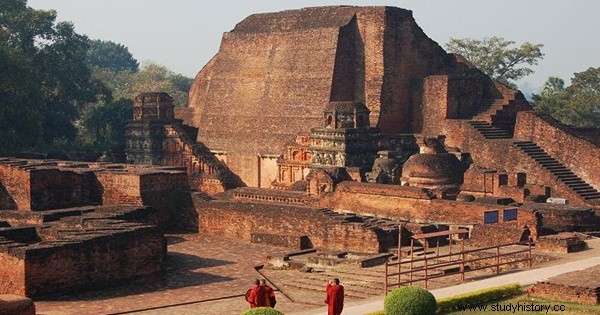
It was founded by Shakraditya alias Kumaragupta-I of the Gupta dynasty. Minhaj-ul-Siraj, the author of Tabakate Nasiri, in his book, writes about the Islamic invader Bakhtiyar Khilji, “With only two hundred horsemen, Bihar went up to the gates of the fort (Nalanda University) and lashed out at the uninformed enemies (ie students and teachers). He had two elder wise brothers - one was named Nizamuddin and the other was Shamsuddin. When the battle started, these two brothers showed great bravery. Bakhtiyar Khilji got a lot of loot. Most of the residents of the palace were hair-shaven Brahmins. All of them were abolished. There Muhammad saw a pile of books. The men were searched for information about him, but all were killed there. After this victory, Bakhtiyar Khilji, laden with loot, came to Qutubuddin who respected and respected him a lot. (Page 309, Granth-2, Tabqate Nasiri, authored by Minhaj-ul-Siraj)
It is said that Bakhtiyar Khilji set fire to a pile of books which kept burning for the next three months. Nalanda University had about 10000 students and about 2000 teachers.
2. Telahara University
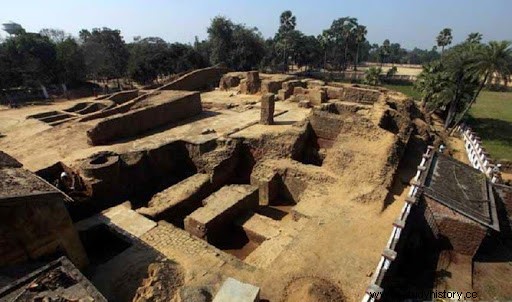
It is 40 km away from Nalanda University. It has been found here in the excavations done from 2009 to 2014. Hentsong and Itsing have discussed it as the equivalent of Nalanda University. It was probably founded by Bimbisara, the ruler of Rajagriha. Hentsag has called it a three-storey building in his descriptions. There is a seating area for more than 1000 teachers and students. After destroying Nalanda University, Bakhtiyar Khilji looted it too, destroyed it by killing students and teachers.
3. Odantapuri University
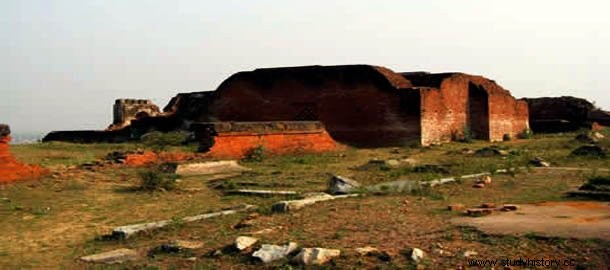
This university was established by the ruler of Pala dynasty, Gopal in the 8th century. Tibetan sources show that more than 12000 students studied here. It was destroyed by Muslim invaders and possibly by Bakhtiyar Khilji.
4. Bikramshila University
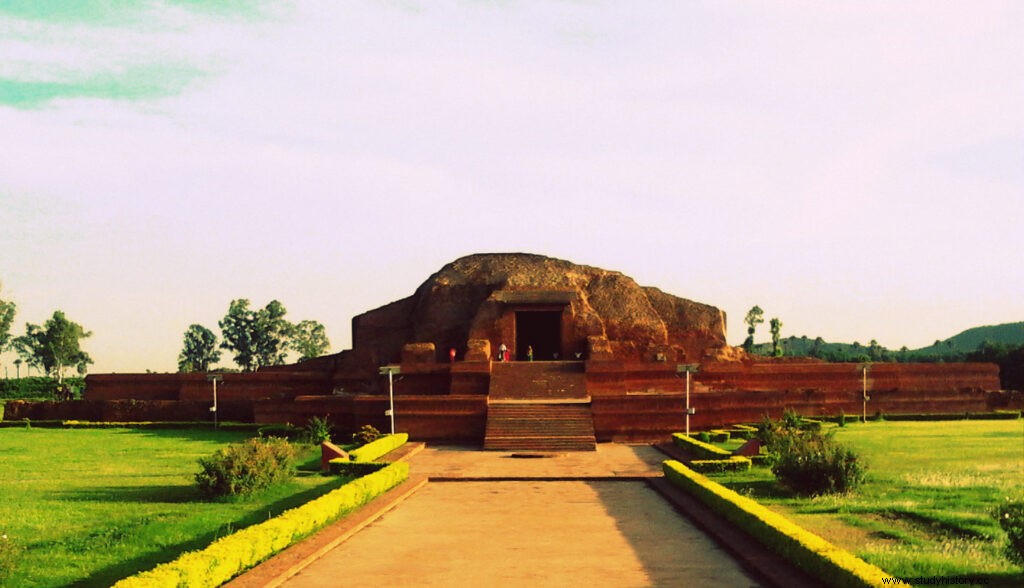
It was founded in the 7th century by Dharmapala, the ruler of the Pala dynasty. Shaitan Bakhtiyar Khilji moved towards Bengal destroying the ancient world famous Hindu and Buddhist education centers like Sarnath, Kushinara, Nalanda etc. On the way he attacked the Vikramshila University established by Dharmapala and looted it and completely destroyed it.
5. Sompura University
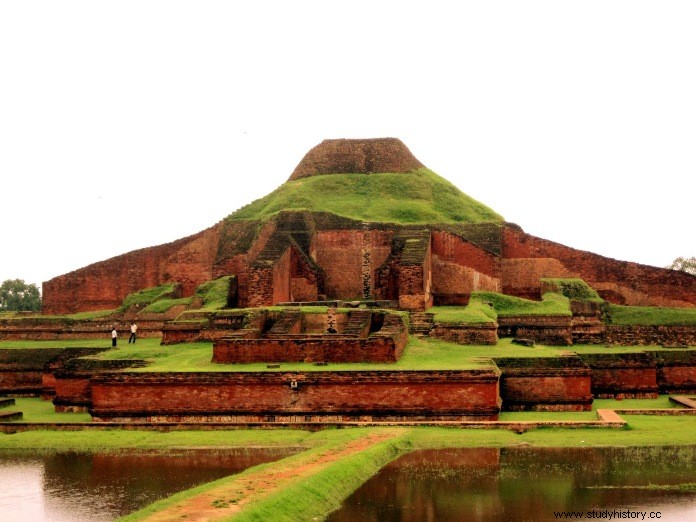
This university was also established by the Pala ruler Dharmapala in the 7th century. It is now in Bangladesh. After the capture of Navadvipa, the capital of the Sen dynasty, by the invader Bakhtiyar Khilji, the teachers and students of this university fled to save their lives, leaving it deserted and unprotected, which was later looted by the Muslims and gradually it was destroyed. . Wikipedia writes, “The ruins of the temple and monasteries at Pāhāpur do not bear any evident marks of large-scale destruction. The downfall of the establishment, by desertion or destruction, must have been sometime in the midst of the widespread unrest and displacement of population consequent on the Muslim invasion.”
6. Pushpagiri University
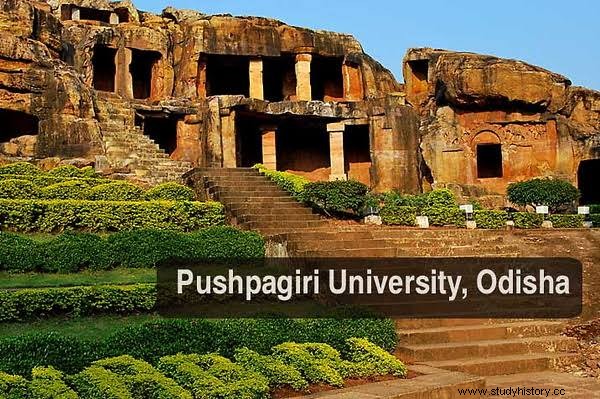
It was located in the Jaipur district of Odisha. This university is believed to be older than Nalanda, probably built by Ashoka. It was spread between three hills Lalitgiri, Udayagiri and Ratnagiri. There is a mention of giving grant to this university by Virapurushadatta, the Ichchhavaku king of Andhra of the third century. In the ninth century, a Buddhist priest came from Gandhara and resided here. This university also got destroyed due to neglect of education under Muslim rule.
7. Taxila University
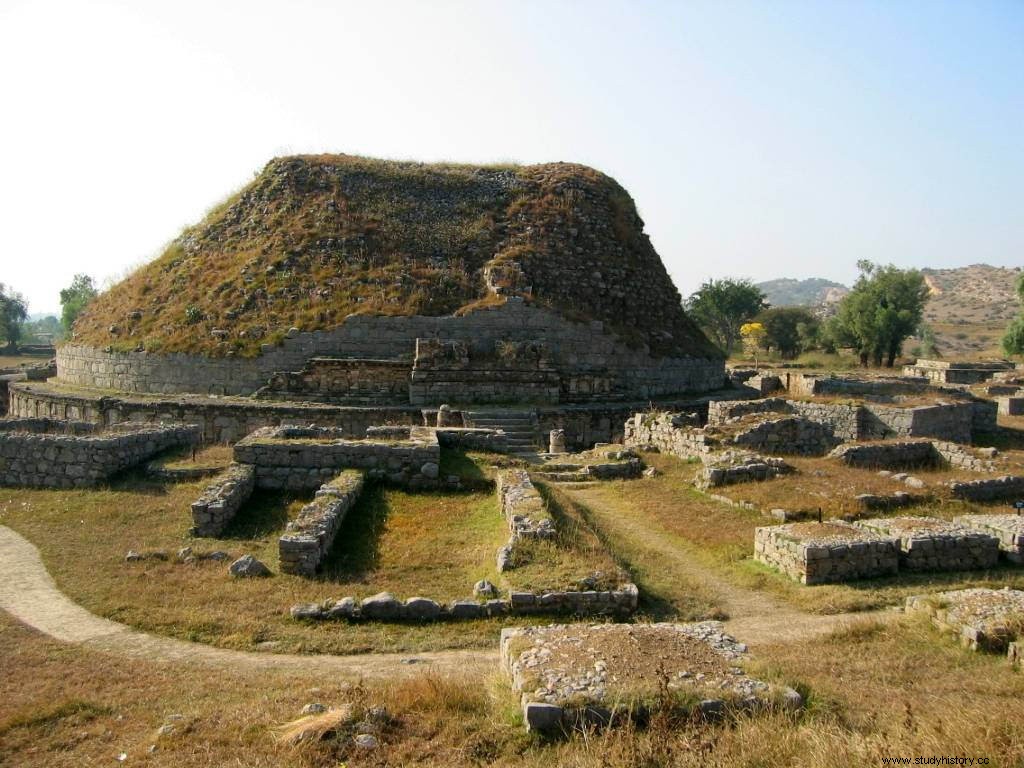
The credit for the establishment of Takshashila University is given to Dhritarashtra's son Duryodhana. He established this university in his maternal grandmother Gandhara in the memory of his mother Gandhari. Before the Muslim invasion, Gandhara was ruled by Brahmins of Hindushahi dynasty. The mighty King Jaipal of the Hindushahi dynasty had rescued the sixes of the Muslim invaders, but in a battle he was defeated by them and he had to leave Gandhar and come to the fort of Lahore. On the other hand, the invaders committed horrific atrocities on his subjects. Taking responsibility for the atrocities on his subjects, he entered the fire and committed suicide. The invaders destroyed the world famous oldest university Taxila and made it in ruins.
8. Shardapeeth University
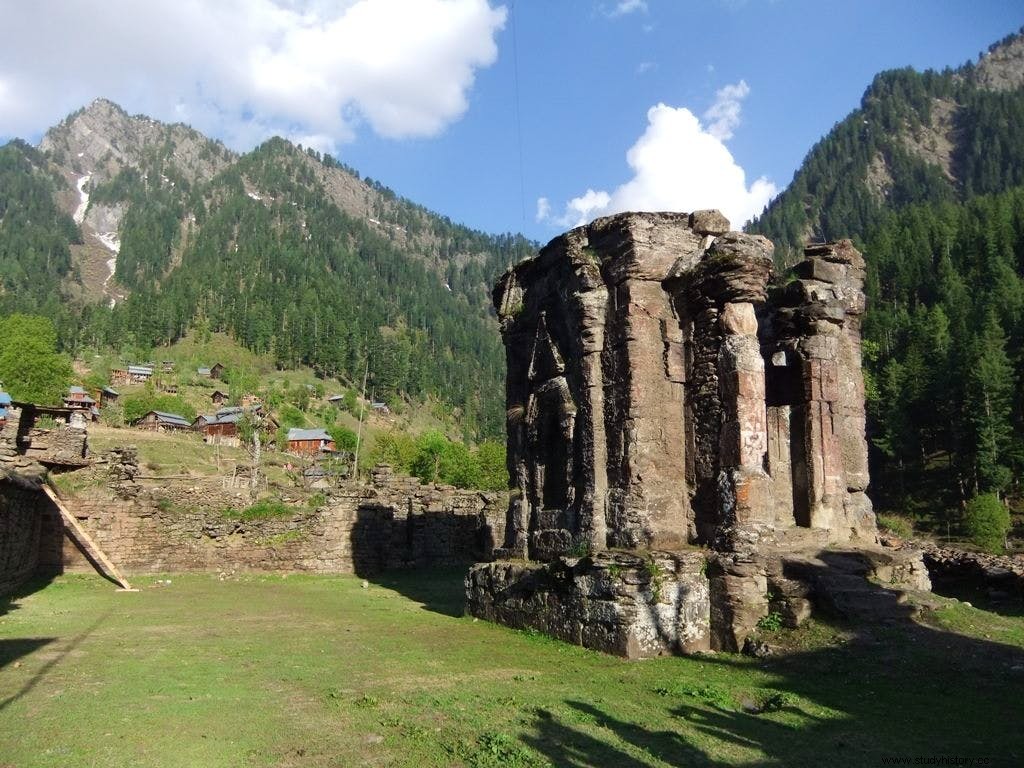
It was one of the world famous 51 Shaktipeeths and an ancient university like Taxila. Now it is in Pakistan Occupied Kashmir. Among the great students of this university, Kalhana, Adi Shankaracharya, Vairotsana, Tibetan Buddhist Kumarajiva, Thonmi Sombhota, who invented the Tibetan script, are prominent.
9. Vallabhi University
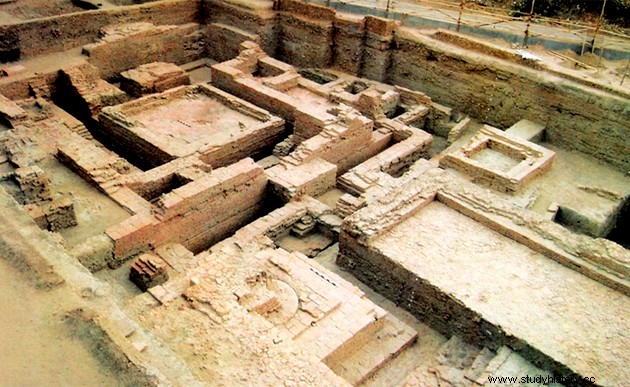
It was replaced by the Maitraka dynasty, a relative of the Guptas who ruled in Saurashtra, Gujarat, who made Vallabhi their capital. It was the main center of education of economics, politics, ethics, science, literature etc. The Buddhist traveler Itsinga who had studied at Nalanda had visited Vallabhi and described it as a great center of learning. This world famous university was destroyed in the invasion of Arabs in the 8th century.
10. Bikrampur University
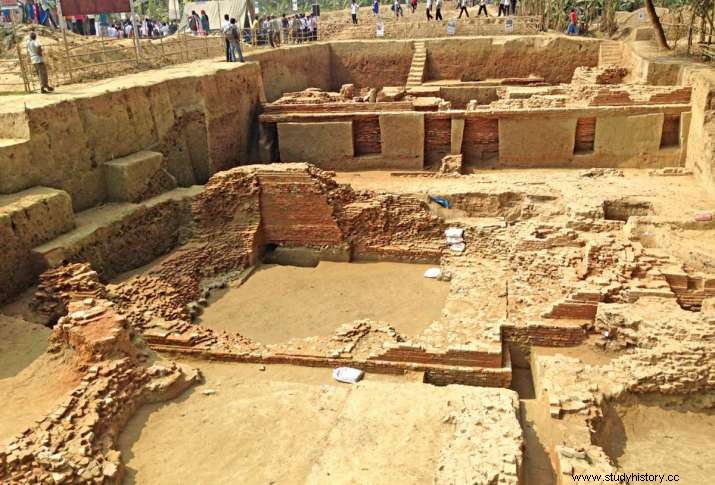
It is now in Munshiganj, Bangladesh. It was founded in the 7th century by Dharmapala, the ruler of the Pala dynasty. It was excavated in 2013. More than 8000 students used to take education here. It was also destroyed to be a victim of plunder and neglect of Muslim invaders.
11. University of Morena

It was located in the modern Chambal division of Madhya Pradesh. It was built in the 8th century by the Gurjara Pratiharas, the descendants of Lakshman, the son of Shri Ram. According to the information received from Chausath Yogini Temple, this university was situated between Mitawali, Padavali and Bateshwar temples. This university was world famous for teaching and training of architecture. This university was destroyed by Muslim invaders or under their rule.
12. Kanthalurshala University
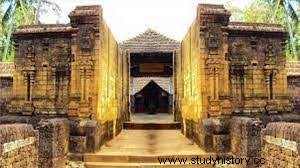
It was located in Thiruvananthapuram, Kerala. This university was located among temple groups from the 9th to the 12th century. Here 64 different subjects were taught. It was called Nalanda of the South. Weapons were also trained here.
13. Jagdal University
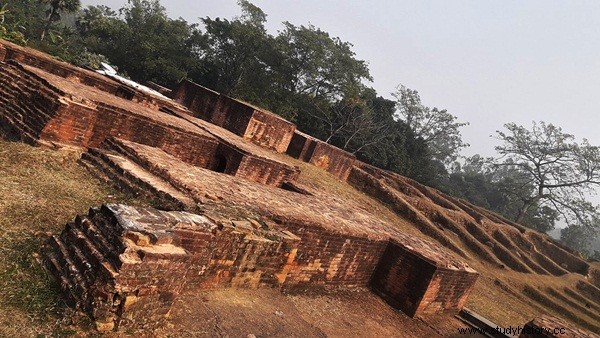
It is now located in Warendra, North Bengal, Bangladesh. It was founded in the 11th century by the ruler of the Pala dynasty, Rampal. The Tibetan source shows that it was one of the 5 largest universities in North-East India. The other four were Nalanda, Odtapuri, Sompura and Bikramshila. It was famous for Sanskrit education. It was also destroyed to fall prey to Muslim invaders.
14. Nagarjunakonda University
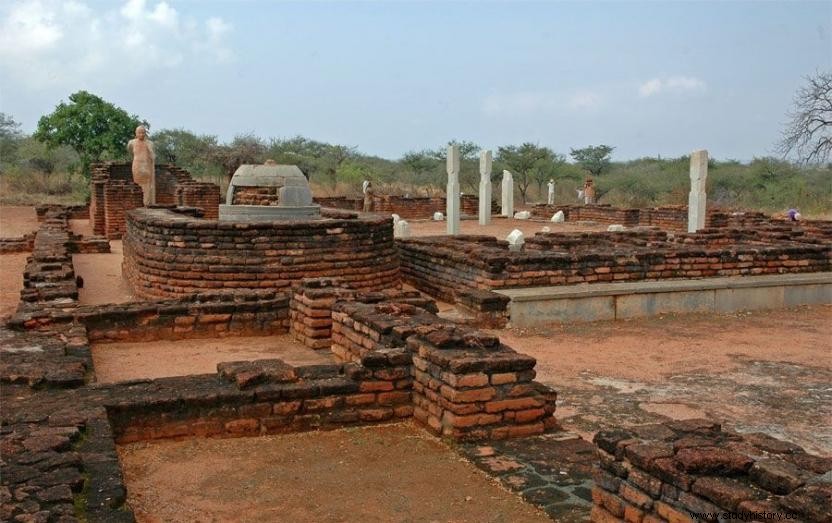
This university was established in the memory of the Buddhist saint Nagarjuna. This was also a very ancient university. According to the available information, this university was most famous in the 7-8th century. Here subjects like science, philosophy, medicine, geography etc. were taught. Coins and inscriptions of Satavahana and Ichchhavaku kings have been found from here.
15. Mithila University
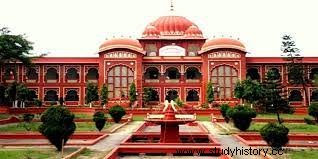
It is believed that this university was running since the time of King Janak. Here mainly the education of Vedas, Vedanga, Upanishad, philosophy, history, astrology, literature etc. was given. In place of that ancient university, now the modern Mithila University has been built.
In addition, it is mentioned on pages 43 to 59 of Godfrey Higgins's book The Celtic Druids that "in the cities of Nagarkot, Kashmir and Varanasi in India, in Samarkand, Russia, there were large centers of learning, where there was a lot of Sanskrit literature."
